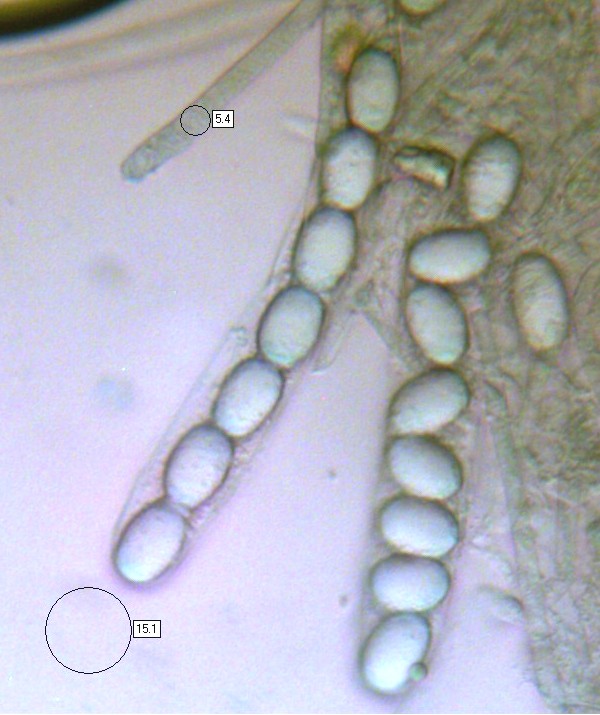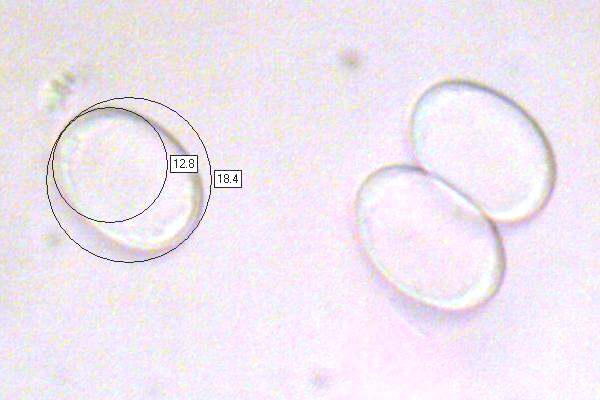Helvella lacunosa Afzel. - Elfin Saddle
Phylum: Ascomycota - Class: Pezizomycetes - Order: Pezizales - Family: Helvellaceae
Distribution - Taxonomic History - Etymology - Identification - Culinary Notes - Reference Sources
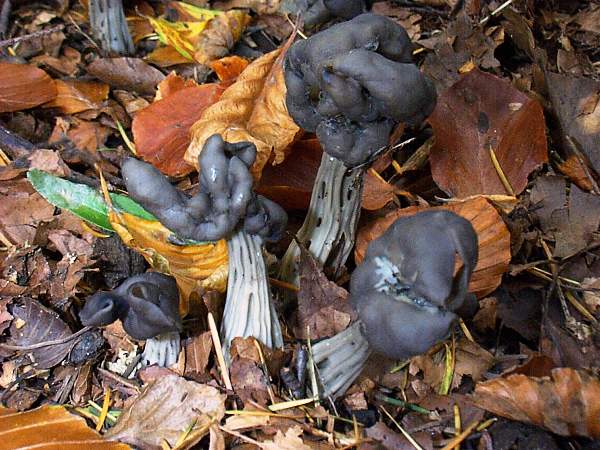
Helvella lacunosa, the Elfin's Saddle, is rather morbid in its appearance, with both the stem and the cap in shades of leaden grey. This species seems to favour rich soil and burnt ground, against which as a background it is not at all conspicuous and so is easily missed.
These saddles are often so distorted that it is impossible not to feel sympathy for the poor elfin creatures reputed to ride on them - or enough, perhaps, to undermine any belief in elves.
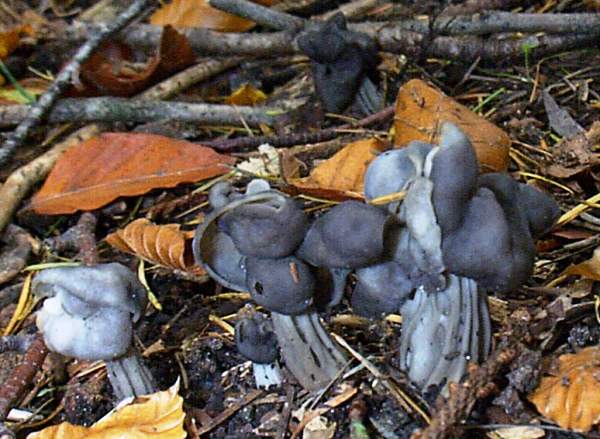
Distribution
A fairly common find in Britain and Ireland, Elfin Saddle fungus occurs also throughout mainland Europe, from Scandinavia right down to the southern shores of the Iberian Peninsula. This species is also found in North America.
Taxonomic history
Elfin Saddle was first validly described and named scientifically in 1783 by Swedish naturalist Adam Afzelius, who called it Helvella lacunosa; this has remained its generally-accepted scientific name to this day.
Synonyms of Helvella lacunosa include Helvella scutula var. cinerea Bres., Helvella mitra L., Helvella sulcata Afzel., Helvella leucophaea Pers., Helvella subcostata Cooke, Helvella costata Berk., Helvella cinerea (Bres.) Rea, and Helvella lacunosa var. sulcata (Afzel.) S. Imai.
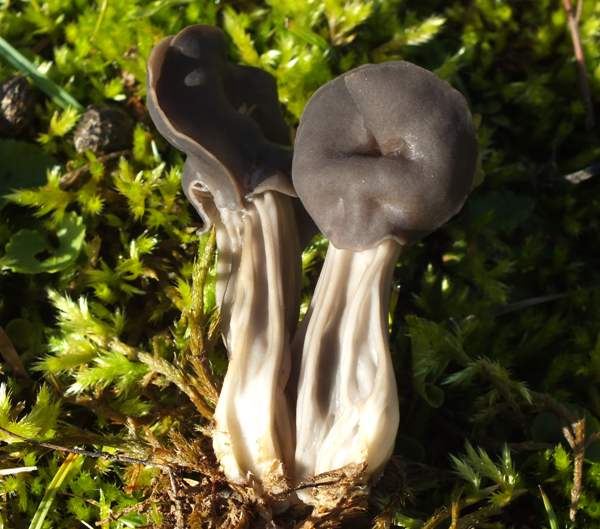
Etymology
Helvella is an ancient term for an aromatic herb. The specific epithet lacunosa means 'having holes' and is a reference to elongated oval troughs in the surface of the fluted stems of these sombre woodland fungi.
Why is the common name Elfin Saddle? Why not Fairy, Pixie or Goblin Saddle, you may wonder. American mycologist Michael Kuo offers a plausible answer when he reminds us that the original name that Elias Magnus Fries provided for the genus was Elvella rather than Helvella - so perhaps elves really do ride on these swarthy saddle fungi in the dead of night.
Identification guide
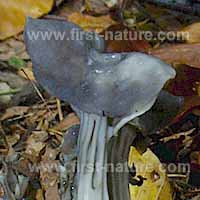 |
DescriptionTypically 2 to 4cm across the cap, Elfin Saddle fungi have a total height 4 to 10cm. Saddle-shaped caps of Helvella lacunosa often have three or more contorted lobes. The cap edges join to the stem to form a multi-lobed inner chamber with several openings. The smooth outer surface of the cap is dark grey and is the surface that bears the spores, while the infertile inner surface is also grey but has a felty feel. Longitudinally grooved and hollow, the stems are grey or grey-brown and often contain many inner chambers. |
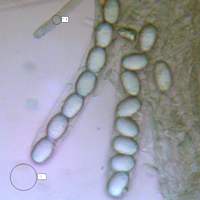 |
AsciAsci are typically 340μm long x 16μm diameter. Each ascus contains eight spores. ParaphysesTypically 5μm diameter, cylindrical, some with capitata apices. |
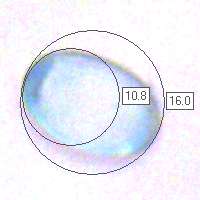 |
SporesEllipsoidal, 15 - 19 x 10 - 13μm, hyaline. Spore printWhite. |
Odour/taste |
Not distinctive. |
Habitat & Ecological role |
On the ground among leaf litter in all kinds of woodland. Often found on burnt ground in woodland clearings. |
Season |
Summer and autumn. |
Occurrence |
Frequent in Britain and Ireland, Helvella lacunosa is found throughout mainland Europe; this ascomycetous fungus occurs also in North America.. |
Similar species |
|
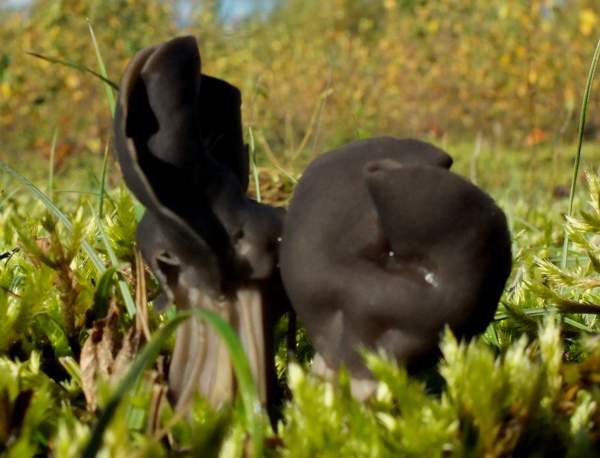
Culinary Notes
Field guides that cover edibility as a topic generally state that Helvella fungi are 'edible but of poor quality'; however, it is well documented that some of these saddle fungi can cause stomach upsets unless very thoroughly cooked, at which point they tend to lack both texture and taste. There is also concern that Helvella species may contain carginogens. What's the point of taking risks for such a dubious gain?
Reference Sources
Fascinated by Fungi, 2nd Edition, Pat O'Reilly 2016, reprinted by Coch-y-bonddu Books in 2022.
Dennis, R.W.G. (1981). British Ascomycetes; Lubrecht & Cramer; ISBN: 3768205525.
Breitenbach, J. & Kränzlin, F. (1984). Fungi of Switzerland. Volume 1: Ascomycetes. Verlag Mykologia: Luzern, Switzerland.
Medardi, G. (2006). Ascomiceti d'Italia. Centro Studi Micologici: Trento.
Dictionary of the Fungi; Paul M. Kirk, Paul F. Cannon, David W. Minter and J. A. Stalpers; CABI, 2008
Taxonomic history and synonym information on these pages is drawn from many sources but in particular from the British Mycological Society's GB Checklist of Fungi.
Fascinated by Fungi. Back by popular demand, Pat O'Reilly's best-selling 450-page hardback book is available now. The latest second edition was republished with a sparkling new cover design in September 2022 by Coch-y-Bonddu Books. Full details and copies are available from the publisher's online bookshop...
